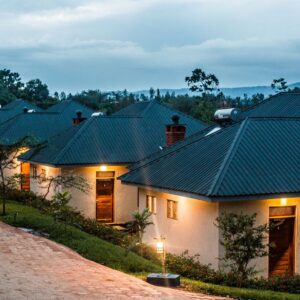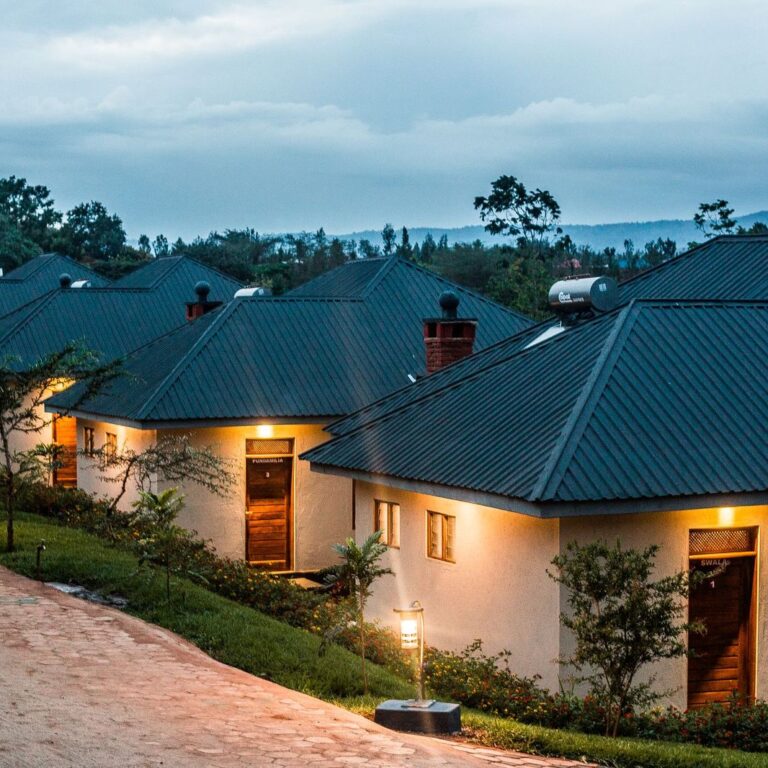Hats For Kilimanjaro: Essential Gear for a Successful Climb.
Choosing the right hat for your Kilimanjaro adventure is crucial for comfort, safety, and performance. The diverse climates and conditions on the mountain demand versatile headgear that can protect against intense sun, freezing temperatures, wind, and dust. Whether you opt for wide-brimmed hats for sun protection, beanies for warmth during cold ascents, or balaclavas for comprehensive coverage, each type of hat serves a specific purpose in ensuring your well-being throughout the climb. Selecting hats made from appropriate materials like fleece or wool further enhances insulation and moisture management. By wearing the right hat, you not only safeguard yourself from environmental hazards but also optimize your climbing experience by staying comfortable and protected in varying conditions on Kilimanjaro.
What Are the Benefits of Wearing a Hat on Kilimanjaro?
Wearing a hat during your Kilimanjaro climb offers several benefits:
Protection from Sun Exposure
Wearing a hat on Kilimanjaro is crucial for shielding your skin from harmful UV rays. The high altitude increases your exposure to the sun, leading to a higher risk of sunburn and long-term skin damage. Hats with wide brims or UV-protective fabrics provide essential coverage for your face, neck, and ears, reducing the risk of sunburn and heatstroke, and helping you stay safe during sunny days on the climb.
Helps Regulate Body Temperature
A hat plays a vital role in regulating your body temperature throughout the climb. In warmer conditions, a breathable hat helps keep you cool by providing shade and allowing heat to escape. In colder environments, an insulating hat retains body heat, preventing rapid temperature loss. By maintaining a stable body temperature, you enhance your overall comfort and performance during the ascent.
Keeps Head Warm in Cold Temperatures
As you ascend Kilimanjaro, temperatures can drop significantly, especially during early morning or nighttime climbs. An insulated hat, such as a fleece or wool beanie, provides essential warmth, protecting you from hypothermia. Keeping your head warm is crucial, as a significant amount of body heat is lost through the head in cold weather. A warm hat ensures you stay comfortable and safe in freezing conditions.
Protects from Wind and Dust
Strong winds and dust are common challenges on Kilimanjaro. A hat can shield your face and eyes from windburn and dust particles, ensuring clear vision and preventing skin irritation. Styles like balaclavas or hats with attached neck gaiters offer comprehensive coverage, protecting you from the elements and enhancing your climbing experience by keeping your head and face clean and comfortable.
What Are the Dangers of Not Wearing a Hat?
Failing to wear a hat on Kilimanjaro can expose you to several dangers:
Sunburn and Heatstroke: The high altitude increases UV exposure, leading to severe sunburn and potential heatstroke.
Hypothermia: The summit’s freezing temperatures can cause hypothermia if your head is not adequately covered.
Windburn and Frostbite: Strong winds can lead to windburn and frostbite on exposed skin.
What Type of Hat Should You Wear?
Choosing the right hat for Kilimanjaro involves understanding the diverse conditions you’ll face. Here are the types of hats to consider what is a good hat for climbing Kilimanjaro?
Sun Hats with Wide Brims
Sun hats with wide brims offer optimal protection against UV rays, covering your face, neck, and ears. These hats are essential for the lower, sun-exposed altitudes of Kilimanjaro, reducing the risk of sunburn and heatstroke. Lightweight and breathable, they keep you cool while shielding you from the intense equatorial sun.
Baseball Caps
Baseball caps are versatile and comfortable, providing basic sun protection. While they don’t cover your neck and ears, they are lightweight and can be paired with a neck gaiter for added protection. Ideal for casual wear during the climb, they are a practical choice for sunny, less intense conditions.
Beanie Hats
Beanie hats are crucial for cold weather, particularly during early morning and night ascents. Made from insulating materials like fleece or wool, they keep your head warm, preventing heat loss and hypothermia. They are compact and fit easily under other headgear.
Balaclavas
Balaclavas provide full head and neck coverage, protecting against wind, cold, and dust. Essential for high-altitude, freezing conditions, they offer comprehensive insulation and can be layered under other hats for additional warmth.
What Are the Best Materials for Hats on Kilimanjaro?
The material of your hat is crucial for ensuring comfort and protection. Here are some recommended materials:
Fleece Hats
Fleece hats are ideal for the cold temperatures encountered on Kilimanjaro. They offer excellent insulation, keeping your head warm even in freezing conditions. Lightweight and quick-drying, fleece hats are perfect for the higher altitudes where warmth and moisture management are crucial.
Cotton Hats
Cotton hats are breathable and comfortable, making them suitable for the warmer, lower sections of the climb. However, they tend to retain moisture, which can be problematic in cold or wet conditions. Cotton hats are best used where warmth isn’t a primary concern but comfort and breathability are needed.
Wool Hats
Wool hats provide superior warmth and are naturally moisture-wicking, making them an excellent choice for the cold, high-altitude parts of Kilimanjaro. They retain heat effectively and can keep your head dry, reducing the risk of hypothermia. Wool is durable and maintains its insulating properties even when damp.
What Are the Recommended Styles for Hats on Kilimanjaro?
The style of your hat can impact its effectiveness. Here are some styles to consider:
Wide-brimmed Hats
Wide-brimmed hats are essential for protecting against the intense sun on Kilimanjaro’s lower altitudes. They provide extensive coverage for your face, neck, and ears, minimizing the risk of sunburn and heatstroke. These hats are breathable and often come with adjustable straps to ensure a secure fit in windy conditions.
Gaiters and Balaclavas
Gaiters and balaclavas offer versatile protection for your head and neck. Can be used to shield your neck and lower face from sun and wind, while balaclavas provide full head coverage, essential for the cold, windy summit nights. Both styles are designed to be worn under other hats for layered protection.
Beanies
Beanies are indispensable for the colder parts of the Kilimanjaro climb. They are made from insulating materials like fleece or wool, providing warmth and comfort during early morning and nighttime ascents. Beanies are compact, easy to pack, and can be worn under other headgear for added insulation.
How to Choose the Right Size Hat for Kilimanjaro?
Selecting the right size hat is important for comfort and protection. A hat that is too tight can cause headaches, while a loose one can be ineffective. Measure your head circumference and check the sizing chart of the brand you choose. Ensure the hat fits snugly without being constricting.
What Are the Recommended Brands for Hats on Kilimanjaro?
Choosing reputable brands ensures quality and reliability. Here are some recommended brands:
Outdoor Research
Outdoor Research is renowned for producing high-quality, durable gear designed for extreme conditions. Their hats are no exception, offering excellent sun protection, warmth, and wind resistance. Known for their innovative designs and materials, Outdoor Research hats are ideal for the diverse climates of Kilimanjaro, ensuring you stay comfortable and protected throughout your climb.
The North Face
The North Face is a trusted brand among outdoor enthusiasts, offering a wide range of hats suitable for various weather conditions. Designed with advanced technologies to provide maximum comfort, insulation, and sun protection. Whether you need a warm beanie for the summit or a sun hat for lower altitudes, The North Face has reliable options that perform well in the challenging environment of Kilimanjaro.
Columbia
Known for its functional and affordable outdoor gear, making it a popular choice for climbers. Their hats often feature Omni-Shade™ technology for UV protection and Omni-Wick™ for moisture management, ensuring you stay dry and cool. Columbia’s diverse range of hats includes wide-brimmed sun hats, beanies, and more, all designed to meet the demands of a Kilimanjaro expedition.
Patagonia
Patagonia combines performance with sustainability, offering hats that are not only effective but also environmentally friendly. Their products often incorporate recycled materials and ethical manufacturing practices. Patagonia’s hats provide excellent insulation and sun protection, making them suitable for the various altitudes and conditions of Kilimanjaro. The brand’s commitment to quality and the environment makes it a great choice for eco-conscious climbers. We recommend wide-brimmed sun hats, beanie hats, balaclavas, and fleece hats for optimal protection and comfort.
Do I need to bring multiple hats for a Kilimanjaro climb?
Yes, bringing multiple hats allows you to adapt to the varying conditions on the mountain, from intense sun to freezing cold.
Are there any specific materials that are best for hats on a Kilimanjaro climb?
Fleece, wool, and synthetic materials are best due to their insulation, moisture-wicking, and quick-drying properties.
Can I purchase hats at the base of Kilimanjaro?
While you may find some gear shops at the base, it is best to bring your own high-quality hats to ensure they meet your needs.
Are there any cultural considerations when choosing a hat for a Kilimanjaro climb?
Respect local customs by avoiding hats with offensive symbols or slogans. Neutral, functional hats are always a good choice.






